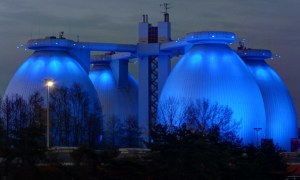🕑 Reading time: 1 minute
An infiltration gallery is a subsurface source of water used for a water supply system whose structure is like a horizontal drain that is positioned below the water table so that it collects the groundwater. It collects the subsurface sources of water.
The horizontal drain can be made out of an open jointed pipe or a perforated pipe. The water collected can be taken to a sump, a storage tank or a collection well.
The important features of infiltration galleries are explained in this article.
Contents:
Features of Infiltration Galleries
The infiltration galleries work best when it is surrounded by a soil that is surrounded by a sufficiently permeable soil so that the gallery can easily collect the water. Gravel is one such permeable soil material that facilitates the flow of water to the infiltration gallery with ease. Gravel also helps trap the large particles that can result in blocking the perforations.
Infiltration galleries are constructed in combination with other means of water supply system so as to meet the increasing water demand. The gallery alone cannot face the demand of a big population.
Generally, one or more galleries are constructed that together connect to a central point like a spring box or a hand-dug well. Hence these center point water collection structures are called collector wells.
Infiltration galleries are constructed in a way that it is prevented from getting contaminated. A safe distance of generally 30 meters is maintained from latrines and any contaminated areas. The sage distance is site-specific and varies with the location.
Infiltration galleries are constructed such that the entry of unfiltered surface water is prevented.
The length of the infiltration galleries varies from meters to kilometers in length depending upon the location of the collector well.
Construction of Infiltration Gallery
The construction of the infiltration gallery is recommended to perform at the end of the dry season. Also, the location of the infiltration gallery must be one meter below the dry season water table.

The brief procedure of constructing an infiltration gallery is explained step by step:
1. Excavation
A trench is excavated one meter below the water table. The supports of the trench have to be supported by means of props and formwork during the process of excavation. This helps to prevent the collapse of the trenches.
2. Base Preparation
A layer of graded gravel is laid on the base of the trench and leveled.
3. Pipe or Drain Block Installation
Pipe or drain block is installed over the prepared base layer of well-graded gravel. Now, the top of the pipe and the sides are filled with more gravel.
4. Preparing Clay Layer
The whole gravel layer is capped by means of an impermeable layer of puddled clay in order to prevent the surface water to enter the gallery.
Yield Capacity of Infiltration Gallery
The yield of infiltration gallery is given by the formula:

q = k [(H2-h2 )/L) Eq.1
Where
k = coefficient of permeability,
H = depth of the permeable stratum above the bottom of the infiltration gallery,
h = height of the water surface inside the infiltration gallery,
L = distance through which seepage takes place
Also Read: Techniques of Water Distribution in Irrigation Engineering
Also Read: 4 Different Types of Geological Formations of Groundwater


